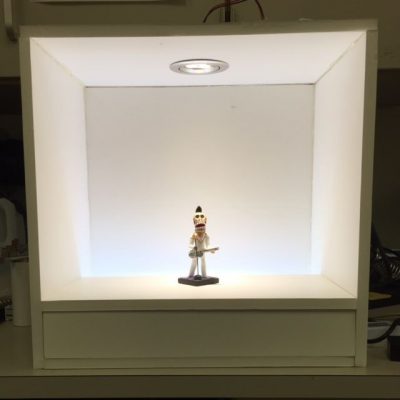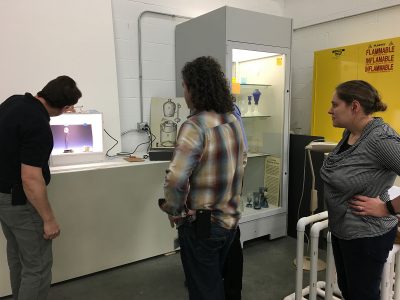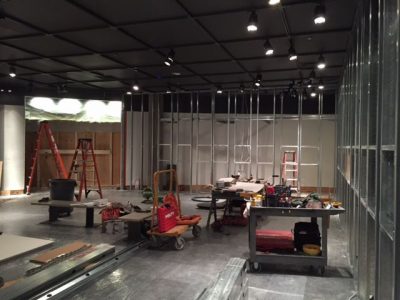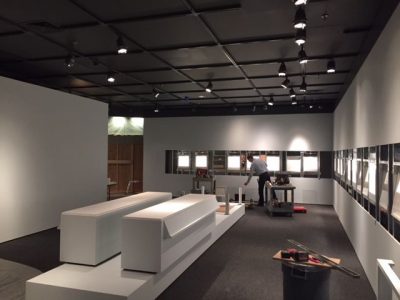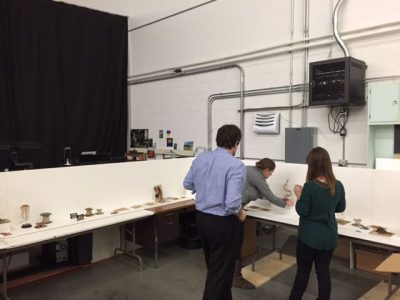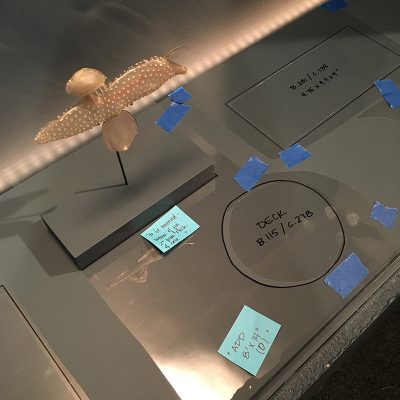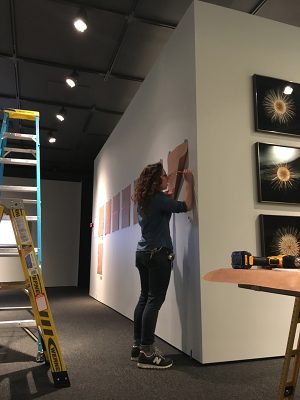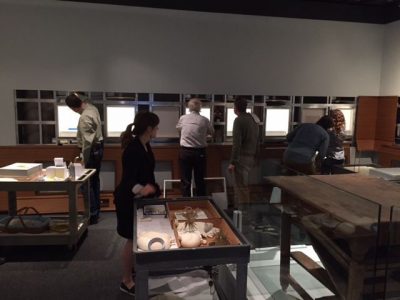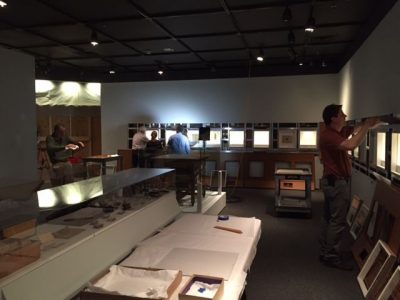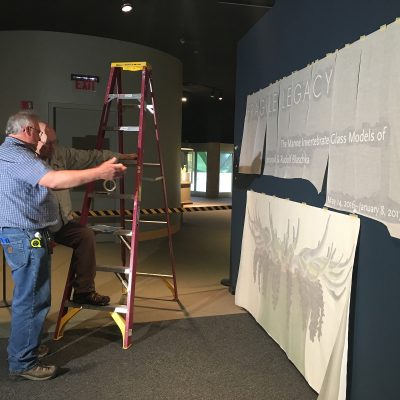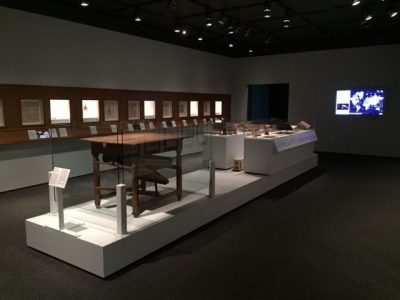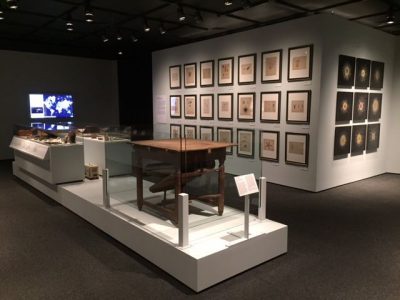The particularly fragile nature of the Blaschka glass marine invertebrate models featured in Fragile Legacy: The Marine Invertebrate Glass Models of Leopold and Rudolf Blaschka required very careful planning for their display. As with most of the Museum’s temporary exhibitions, we worked with an outside exhibition designer. For this exhibition, the CMoG core exhibition planning team partnered with Annabelle Selldorf and her team to design a show that safely showcased the exquisite glass models and told their stories.
In preparation for the exhibition, museum staff (curatorial, collections, conservation and photography/lighting departments), along with Annabelle and her team, had numerous discussions about case design, construction materials, and lighting to safely present the objects. Building case mock-ups allowed us to find the best ways to safely display and light the models. Casework always needs to be stable and secure, but the fragile nature of these objects required us to be very careful about internal lighting and heat gain, which could damage them. We chose LED lighting for its control, lower temperatures, and responsible energy consumption. We chose to wash the back walls of the cases to silhouette the objects and included overhead lighting to highlight object details.
- Case lighting mock-up
- Testing the lighting
Meanwhile, collections and conservation staff managed the de-installation of the Ennion and His Legacy exhibition and the conditioning, packing and return of all loans. Then we began the process of demolition and prep for the construction of the Fragile Legacy based on Selldorf’s design.
- The gutted gallery ready to go.
- Changing gallery during construction
After the objects were selected and the checklist finalized, the curators worked with collections and conservation staff to plan the layout of the display cases, using the actual models and mock-up cases. Photographs and templates were prepared, as well as a list of mounts and risers needed for installation. This advance planning resulted in a very smooth installation.
- Offsite case layout session
- Photographs and templates to make install run smoothly
- Detail of templates
Extreme care was taken to stabilize and transport the very fragile models to the Museum from offsite storage.
As the opening date approached, the gallery construction came to an end and we moved to the installation, lighting, and labeling part of the project. Collections staff matted and framed of all of the drawings, created mounts for safely displaying the models, and coordinated all of the loans for the exhibition. The interpretive team worked with graphics and our digital staff to finalize graphics, AV components, and the “field guide” for the exhibition.
- Preparing to install the drawings.
- Installing the glass models.
- Lighting the cases
- Adding the wall graphics
Everyone worked hard to create an environment that would allow visitors to engage with the objects’ stories and safely display the beautiful and delicate models. The resulting exhibition opened in May to our visitors with a very positive response. Be sure to see Fragile Legacy before it closes in January.
- Completed installation
- Completed installation


